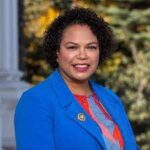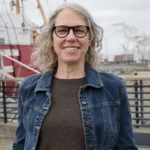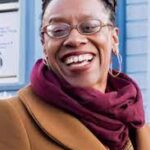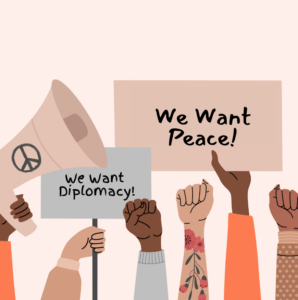March Primaries/Jennifer Esteen
Wellstone Club endorsements for the March Primary Election:
Alameda County Board of Supervisors District 4: Jennifer Esteen

Support Jennifer’s campaign here: https://www.jenniferesteen.com
Wellstone Club endorsements for the March Primary Election:
Alameda County Board of Supervisors District 4: Jennifer Esteen

Support Jennifer’s campaign here: https://www.jenniferesteen.com
Wellstone Club endorsements for the March Primary Election:
CA Assembly District 18: Mia Bonta

Support Mia’s campaign here: https://www.miabonta.com

Wellstone Club endorsements for the March Primary Election:
CA Senate District 7: Kathryn Lybarger
Support Kathryn’s campaign here: https://www.kathrynlybargerforstatesenate2024.com
\
Wellstone Club endorsements for the March Primary Election:
US 12th Congressional District: Lateefah Simon

Support Lateefah’s campaign here: https://www.lateefahsimon.com

This article was written by Marilyn Albert, a retired Registered Nurse, and health care union activist, living in Richmond, California.
It is often said that events like the COVID19 pandemic open minds to bold ideas previously not accepted. We can see this every day — with both immediate and longer term solutions coming into clearer and clearer focus. We are also learning more about the crisis before the crisis — in the hospitals, nursing homes, working class communities, and especially among oppressed people.
Medicare for All pre-pandemic
Think back to the Presidential primary debates of three months ago and their frustrating discussion of Medicare for All. But then, exit polls in each primary, whether Sanders won or lost, showed a majority of Democratic voters favoring Medicare for All.
As COVID-19 has circled the world, the whole discussion about Medicare for All, single payer is shifting — as the people ask, how could this happen? How can we prevent it from happening again? When should publicly accountable government replace profit making? These are no longer theoretical questions. The utter failures of the profit-based health care system are right before our eyes every day.
The healthcare industry crashes
When the symptoms of the coronavirus appear, everyone is told, “don’t come to the Emergency Room! Call your doctor!” — which is correct, except that at least 25% of Americans do not have a primary care doctor they can just call. For those with underlying chronic conditions — the comorbidities that make the virus so dangerous — the COVID crisis has displaced their regular sources of care — doctors visits of all kinds have dropped precipitously, so the chronically ill may sicken more quickly, becoming much more vulnerable to the virus.
When we are so sick that we succeed in making our way into a hospital, we encounter an industry functioning very poorly. The whole idea of “surge capacity” in hospitals has been a joke for 30 years — the United States has the lowest number of hospital beds per capita than any other country. Ever expanding hospital networks, including those owned by private equity capital, are regularly closing unprofitable hospitals in both urban and rural areas, while simultaneously building brand new hospitals in well insured neighborhoods. Long standing hospitals have been subjected to continuous cuts of departments, units, and beds for 30 years. Patients lining hallways of ERs even for days was the crisis before the crisis — ER staffs have coped with this for many years. “Just in time staffing” of hospitals has been refined to the point where many nursing workers do not know their work schedule for the upcoming week. Newly minted registered nurses have trouble finding full time jobs.
Hospital systems have been in ruthless competition with each other for market share. Huge reductions in “covered lives,” as the insurers call them, resulting from the pandemic’s unemployment explosion, will further destabilize the hospitals’ finances. The bailout of the hospitals in the first round of COVID legislation has been turned over for administration to the biggest profit-making insurance company, United Health! How these funds will be used has been a mystery so far. Supposedly a lot of COVID care will be directly paid for by the government to the hospitals, but we don’t know yet how much of the cost of care will be billed to patients. Bills for critical care could be hundreds of thousands of dollars, and many ER bills will be unpaid by insurance companies because ER doctors have been moved out of hospital networks, again a product of private equity capital’s intrusion into health care. This is the cause of so-called surprise billing.
Another predictor of the private insurance based health system collapse is that private insurance premiums may increase by up to 40 percent after the pandemic.
As of mid-April, about 9,000 health care workers in the United States have been infected. We know many have died, as have transportation workers, grocery workers, and other “essential workers.” Some in the industry suspect that hospital managements are hoarding personal protective equipment and not distributing it to workers who need them immediately. This is consistent with how hospital managers have inured workers to worsening conditions for years, telling staff “this is only temporary, do the best you can” as they hope workers get used to it and save the hospital money long term.
10,000 residents of skilled nursing facilities are dead from the virus as of the last week of April. In California, 40 percent of COVID deaths have been attributed to elder care facilities. Seventy percent of nursing homes are run for profit, and many have been the sites of bitter union struggles. The vast majority have been chronically understaffed, with extremely high turnover rates. Before COVID, 400,000 residents died due to nursing home infections nationally every year. Even in unionized homes, one nursing assistant often cares for 15 patients during a shift. Family members who are accustomed to doing their own checking on conditions cannot go inside the facilities now.
In mid-April, we began learning of extremely high infection rates among both among symptomatic and asymptomatic residents and staff members in the few homes where everyone has been tested. Another big problem is that infectious and non-infected nursing home and rehabilitation residents are being mixed together, which will possibly prove disastrous. The Governors of California and Connecticut have called in the National Guard to do inspections, fast COVID testing, isolate the infectious, and care for the residents at risk. Governments cannot rely on reports filed by those eldercare facilities which are dishonest — which is way too many! More emergency action must be taken to save our elders at the epicenter of the crisis!
Emergency action needed on racism’s impact
Medical racism has been a crisis before this crisis. But the data we are seeing in recent weeks is shocking. Chicago, Louisiana, and Milwaukee are areas where the African American death rate is hugely higher than the percent of Black people in the general population, sometimes 40 to 70 percent of all total deaths! In South Carolina, where African Americans compose 27 percent of the population, they represent 55 percent of the COVID deaths. The death rate for Latinos in New York City is twice that of whites. The Navaho Nation ranks third in deaths following New York State and New Jersey.
The immigrant detention camps — hardly mentioned by the media lately — could be COVID breeding grounds. The immigrants must be moved into humane living conditions immediately.
Being in prison or a jail could be a death sentence, no matter why the incarcerated person is there or how short a time. The ACLU has done a study showing that mass incarceration will add 100,000 deaths unless there is substantial reduction of the jailed population immediately.
Dr. Fauci was wrong when he was asked about the racial disparities in the pandemic and he said nothing can be done right now to address this other than give everyone good care.
There are immediate steps which can be taken to reverse the death toll in oppressed communities and these steps must be called for! This is an area where the Medicare for All movement should coalition with community and worker leaders. Such steps include:
Medicare for All, post-pandemic
Some economists predict 40 to 50 million people will lose their jobs as a result of the pandemic, losing their healthcare also. This makes the biggest anti-Medicare for All talking point — that everybody loves their employer-paid insurance — now practically useless to our opponents. People are convinced that we need universal health care not related to employment.
There is good news in two new polls. The first, done by Politico the last week of March, shows that from February to March, somewhat early in the pandemic in the U.S. — support for Medicare for All rose by 9 points. And that is following months of massive attacks on Medicare for All during Bernie Sanders’ primary campaign. The second poll, released by Hill-Harris on approximately April 24th, showed that 88 percent of Democrats favor Medicare for All. Biden is being told his previous position is politically untenable. Bernie Sanders and other progressive forces, are said to be in negotiation with Biden over his health care position in light of new levels of support for Medicare for All.
Our Medicare for All legislation in a new light
We can scroll through HR 1384, Congresswoman Jayapal’s Medicare for All Act of 2019, and see how each section of the bill now resonates with meaning in new ways:
Another world is possible!
From our vantage point at the beginning of this pandemic, it is not hard to see how it would have been different if we had had a Medicare for All system before the virus arrived.
Thousands have probably died unnecessarily because of the Trump Administration’s malfeasance, corruption, and incompetence.
Now is our chance — if we act with confidence and sharpen our tactics — to convince the people to support publicly financed, accountable, unified, national health insurance — a big structural change, which could be one of many. Another world is possible with COVID19 and Donald Trump gone!
This from the New York Times:
Many Americans have demonstrated heroic strength during the coronavirus pandemic, but the society itself has revealed profound weaknesses. Widening gaps in income, wealth and opportunity in the years before the virus hit left everyone more vulnerable to the disease. It undermined the nation’s defenses and weakened its response. Yet the devastation of the pandemic has also created an opportunity to begin to put things right, to ensure that the America that ultimately emerges is more just, more free and less fragile. Through this initiative, Times Opinion is exploring, and seeking to answer, basic questions about what the government owes its citizens, what corporations owe their employees and what we all owe each other. America was ailing long before the coronavirus reached its shores. Now we have the chance to make it better.
NY Times articles on diverse dimensions of the current crisis are listed here.
Are you looking for ways to get more involved in local voter engagement groups? Look no further! We have three great options for you:
Becca Freed, Indivisible Berkeley – They’re working on texting to flip Virginia and canvassing for CD-10.
Andrea MacRae, East Bay Activist Alliance – They work to help elect Democrats all over the US, especially at the state level, particularly in areas that can flip red to blue. The East Bay Activist Alliance is an affiliate of the Sister District Project.
Debbie Raucher: Swing Left – They organize activities for volunteers from the San Francisco East Bay area including Oakland, Berkeley, San Leandro and other nearby cities.

California Senate President Pro Tem Toni Atkins (D-San Diego) does not agree with Gov. Gavin Newsom’s request to put aside her anti-Trump, pro-environment bill, SB 1.